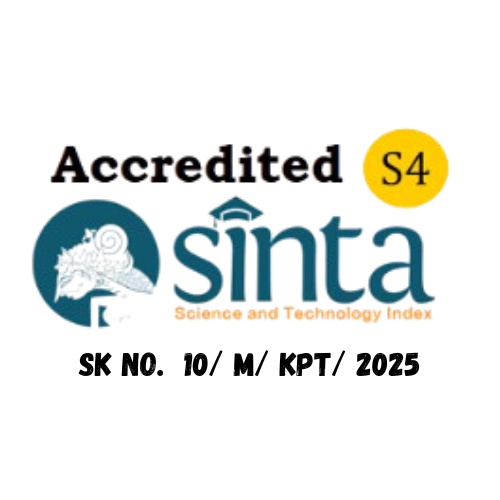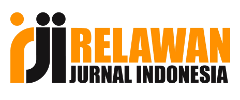Comparison of Forecasting Methods Using Time Series Models
Abstract
Forecasting needs to be done to predict conditions in the future so that they can prepare the required resources. PT XYZ is a manufacturer of veterinary drugs with one of its products being probiotics with a size of 2kg whole research problems being studied. Demand for probiotic products fluctuated so that forecasting was needed to predict the number of products in the future period. This study aims to compare demand forecasting with forecasting methods on the Time Series Forecasting Model and determine the best forecasting method. Forecasting methods used are Moving Average, Weighted Moving Average, Exponential Smoothing, and Trend Linear. Based on the error measurements that have been made, the Trend Linear method gives the Mean Square Error, Root Mean Square Error and Mean Percentage values smaller than other methods. Meanwhile, the error measurement based on the Mean Absolute Deviation and Mean Absolute Percentage Error, the Exponential Smoothing method with α = 0.5 gives a smaller value than other methods. However, in the verification of forecasting based on tracking signals, the results show that the Linear Trend method is more predictive and gives closer to actual results than the Exponential Smoothing method with α = 0.5. Therefore, the best forecasting method chosen is the Linear Trend method. The results of forecasting the demand for 2kg probiotic products for the next period show an increase in demand. The results of this study are expected to provide recommendations for companies to determine policies to prepare to fulfill demand in the coming period.
References
Awanda, R. and Oktafianto, K. (2021) ‘Peramalan Permintaan Paving Menggunakan Metode Weighted Moving Average dan Exponential Smoothing’, Jurnal Matematika, 03(01), pp. 14–18.
Gaspersz, V. (2002) Production Planing and Inventory Control. Jakarta: PT. Gramedia Pustaka Utama.
Hanke, J.E. and Wichern, D. (2014) Business Forecasting. Edinburgh Gate, Harlow: Pearson Education Limited.
Hayuningtyas, R.Y. and Sari, R. (2021) ‘Aplikasi Peramalan Alat Kesehatan Menggunakan Single Moving Average’, Jurnal Infortech, 3(1), pp. 40–45.
Heizer, J. and Render, B. (2011) ‘Operations Management’. New Jersey: Pearson Education, Inc.
Iwan, Iviq, E.R. and Yulianto, A. (2018) ‘Analisa Peramalan Permintaan Mobil Mitsubishi Xpander dengan Tiga Metode Forecasting’, Journal Humaniora, 18(2), pp. 249–256. Available at: doi: https://doi.org/10.31294/jc.v18i2.
Kusuma, B.S. (2015) ‘Analisa Peramalan Permintaan Air Minum Dalam Kemasan Pada PT . XYZ Dengan Metode Least Square dan Standard Error of Estimate’, Malikussaleh Industrial Engineering Journal, 4(1), pp. 42–47.
Landia, B. (2020) ‘Peramalan Jumlah Mahasiswa Baru Dengan Exponential Smoothing dan Moving Average’, Jurnal Ilmiah Intech : Information Technology Journal of UMUS, 2(01). doi:10.46772/intech.v2i01.188.
Lusiana, A. and Yuliarty, P. (2020) ‘Penerapan Metode Peramalan (Forecasting) Pada Permintaan Atap di PT X’, Industri Inovatif : Jurnal Teknik Industri, 10(1), pp. 11–20. doi:10.36040/industri.v10i1.2530.
Nasution, A. (2019) ‘Metode Weighted Moving Average Dalam M-Forecasting Pendahuluan’, JURTEKSI (Jurnal Teknologi dan Sistem Informasi),V(2), pp. 119–124.doi: 10.33330/jurteksi.v5i2.355.
Ngantung, M. et al. (2019) ‘Analisis Peramalan Permintaan Obat Antibiotik Pada Apotik Edelweis Tatelu’, Jurnal EMBA: Jurnal Riset Ekonomi, Manajemen, Bisnis dan Akuntansi, 7(4), pp. 4859–4867. doi:10.35794/emba.v7i4.25439.
Prapcoyo, H. (2018) ‘Peramalan Jumlah Mahasiswa Menggunakan Moving Average’, Telematika, 15(1), p. 67. doi:10.31315/telematika.v15i1.3069.
Pratami, N.W.C.A. (2018) ‘Analisis Jumlah Permintaan Tenaga Kerja Perhotelan di Denpasar dengan Trend Linier’, Jurnal Bakti Saraswati, 7(1), pp. 31–37.
Rachman, R. (2018) ‘Penerapan Metode Moving Average Dan Exponential Smoothing Pada Peramalan Produksi Industri Garment’, Jurnal Informatika, 5(2), pp. 211–220. doi:10.31311/ji.v5i2.3309.
Sarjono, H. and Abbas, B.S. (2017) Forecasting : Aplikasi Penelitian Bisnis QM for Windows VS Minitab VS Manual. Bogor: Mitra Wacana Media.
Syafwan, H. et al. (2021) ‘Forecasting Jumlah Pengangguran Di Kabupaten Asahan Menggunakan Metode Weighted Moving’, Jurnal Teknik Informatika Kaputama (JTIK), 5(2), pp. 224–229.
Ulfa, U., Sumijan and Nurcahyo, G.W. (2019) ‘Peramalan Penjualan Pupuk Menggunakan Metode Trend Moment’, Jurnal Informatika Ekonomi Bisnis, 1(4), pp. 8–14. doi:10.37034/infeb.v1i4.4.
Yanti, N.P.L.P., Tuningrat, I.. M. and Wiranatha, A.A.P.A.S. (2016) ‘Analisis Peramalan Penjualan Produk Kecap Pada Perusahaan Kecap Manalagi Denpasar Bali’, Jurnal Rekayasa Dan Manajemen Agroindustri, 4(1), pp. 72–

This work is licensed under a Creative Commons Attribution-NonCommercial-ShareAlike 4.0 International License.













